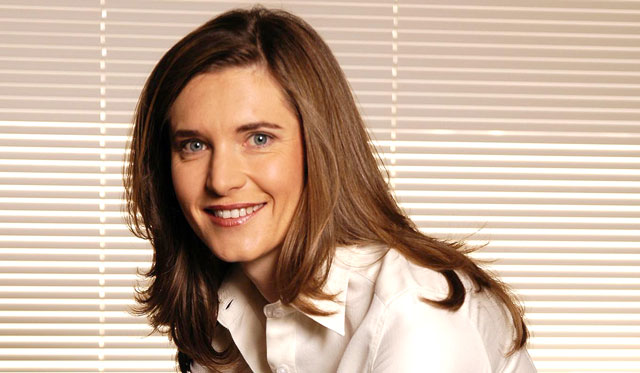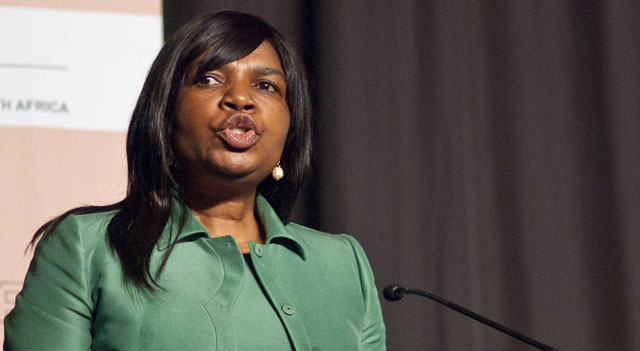
Free-to-air broadcaster e.tv has filed papers in the high court in Johannesburg against communications minister Dina Pule, accusing of her acting unlawfully in appointing Sentech to manage the control system that will be used in the set-top boxes that are needed for consumers to receive digital terrestrial television signals.
Although e.tv has asked the court to hear the matter urgently, the legal dispute with the minister looks certain to delay once again the already long overdue switch-on of digital services.
The broadcaster says the question of which parties are responsible for managing set-top box control has to be finalised well before the commencement of digital migration. “Without this issue being determined, it will not be possible to even have set-top boxes manufactured, let alone distributed.”
In her founding affidavit in the notice of motion to the court, e.tv chief operating officer Bronwyn Keene-Young has accused Pule of exercising powers she doesn’t have when she purportedly appointed Sentech to be responsible for managing the set-top box control system. State-owned Sentech, which falls under the department of communications, is responsible for upgrading SA’s signal broadcasting network for digital technology.
The SABC and e.tv, SA’s two incumbent terrestrial broadcasters, had previously been charged with coming up with the control system and awarding a tender for its implementation.
The control system, sometimes referred to as the “conditional access” system, will ensure compliance with a minimum set of specifications for set-top boxes and prevent grey imports. Only those boxes that comply with the minimum specifications will be able to decode the country’s digital broadcasts. It will also allow for individual set-top boxes to be switched on and off, preventing the use of stolen set-top boxes.
In addition, e.tv says broadcasters may not be able to provide broadcasts in high definition without set-top box control. The reason for this, it says, is that content suppliers require strict levels of security in relation to the high-definition transmission of their programmes in order to prevent piracy.
“The minister has no power to direct that Sentech be responsible for managing the set-top box control system,” Keene-Young says in the founding affidavit. “No piece of legislation confers upon the minister the power to determine that Sentech will be responsible for managing the … system.”
She says Pule has “failed repeatedly” to inform e.tv about what she believes is the source of her power for the decision to grant management of the control system to Sentech. She adds that the minister and the department of communications were “well aware of the fact that the SABC and e.tv were proceeding to make the necessary arrangements for them to manage the set-top box control system”.
(TechCentral was unable to get immediate comment from Pule’s office on e.tv’s legal action and the allegations, but a spokesman has promised to follow up and provide feedback, which will be published as soon as it is received.)
Keene-Young says the SABC and e.tv reached an initial agreement regarding their joint management of set-top box control as far back as 2008. The agreement was later reaffirmed on 6 August 2012.

“I am advised and submit that it is an elementary principle of the rule of law and a principle of legality that members of the executive may exercise no power and perform no function beyond that conferred upon them by law,” she says in the affidavit. “In the present case, this requirement has not been met and on this basis [Pule’s] decision is unlawful.”
E.tv says the decision would mean that both the SABC and e.tv would be forced to pay Sentech for its set-top control agreement, reached with technology supplier Nagravision, “together with such additional mark-ups as Sentech imposes”.
Keene-Young says in the affidavit that neither e.tv nor the SABC would be able to negotiate costs with Nagravision or Sentech and that the costs would “significantly exceed” the costs if the two broadcasters were instead to proceed with managing the set-top box control system themselves. In addition, neither broadcaster would be able to evaluate the extent to which the Sentech/Nagravision system is appropriate to meet their needs.
“The [minister’s] decision violates the provisions of the Electronic Communications Act, the digital migration regulations and the guarantee of independent broadcasting regulation in section 192 of the constitution,” Keene-Young warns.
“The decision by the minister to appoint Sentech to deal with this issue was a purported reversal and alteration of the earlier decision by the minister’s predecessor. In the circumstances, the rights and legitimate expectations of e.tv and the SABC were adversely affected by the conduct of the minister and her department. For the initial decision to be altered, the minister first had to afford e.tv and the SABC an opportunity to be heard. Yet, she did not do so.”
In addition, Keene-Young says that Pule “apparently relies on the fact that Sentech has an existing set-top box control system, used on its satellite transmission network”.
“E.tv has had direct experience of Sentech’s mismanagement of this system and, had it been given the opportunity to do so, would have placed evidence of this before the minister to contend that Sentech is plainly ill-equipped to manage such a system in the present context.”
TechCentral has previously reported about the security problems with the encryption of Sentech’s Vivid satellite platform – see “Sentech loses high court battle”.
Keene-Young says Pule has “consistently failed to explain the legal basis and reasons for her decision” and, because more than 90 days had lapsed since she was asked by e.tv to explain the decision, it “must be assumed to have been taken without good reason” under the Promotion of Administrative Justice Act.
Keene-Young tells TechCentral that the SABC and e.tv want to establish a company to manage the conditional access system. This would not act as a barrier to new terrestrial broadcasters, she says, as any new licensees would become part of this company.
In the notion of motion, Sentech, the Independent Communications Authority of SA and the SABC are named as the second, third and fourth respondents respectively.
“The SABC is cited because, together with e.tv, it was mandated by the minister to manage the set-top box control system,” Keene-Young says in her affidavit. “I appreciate that the SABC is in a difficult position. While I have little doubt that it would wish to support this application, the minister whose decision is impugned in this application has substantial powers and responsibilities with regard to the SABC. I therefore anticipate that the SABC will simply abide the relief sought.”
The high court is set to hear the matter in the week of 16 October. — (c) 2012 NewsCentral Media




